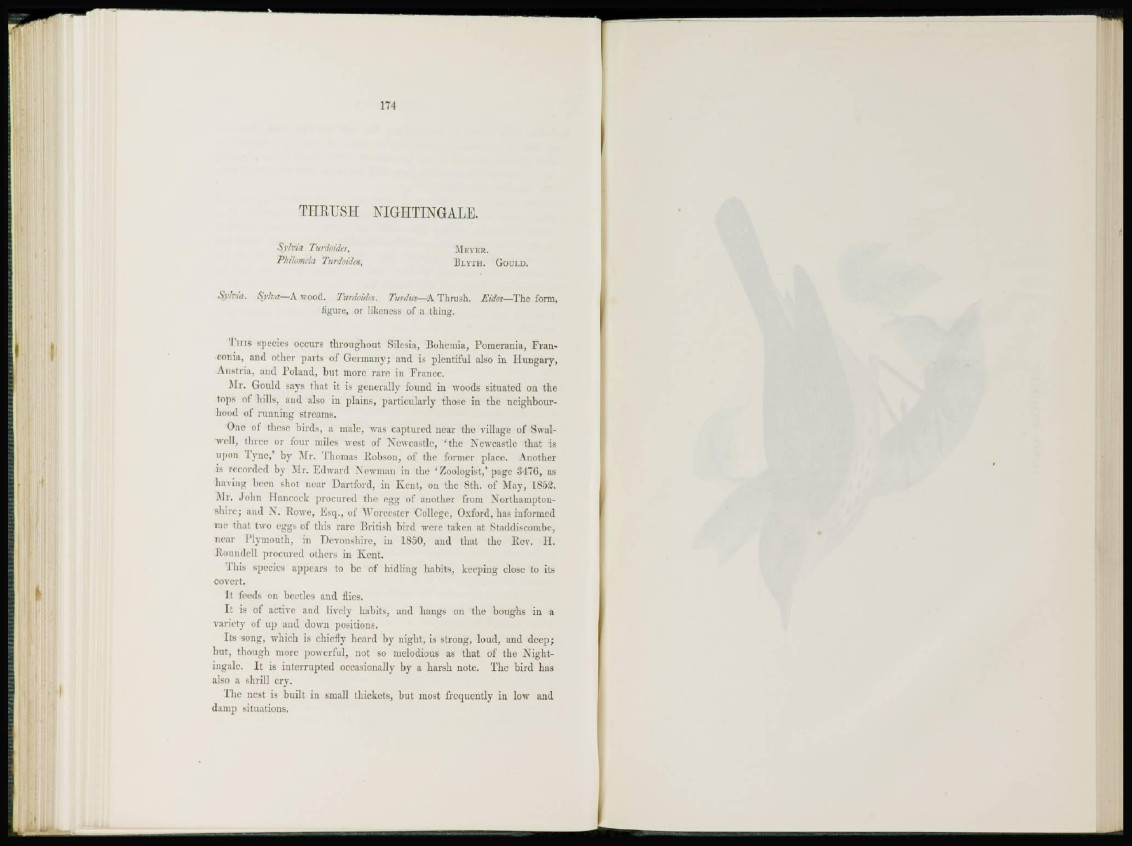
1T1
TTIIU7SII NIGHTINGALE.
Sylvia Turdoides, MEYER.
Philomela Turdoides, BLYTH. GOULD.
Sylvia. Sylva—A wood. Turdoides. Tardus—A Thrush. Eidos—The form,
figure, or likeness of a thing.
T i n s species occurs throughout Silesia, Bohemia, Pomerania, Franconia,
and other parts of Germany; and is plentiful also in Hungary,
Austria, and Poland, but more rare in France.
Mr. Gould says that it is generally found in woods situated on t he
tops of hills, and also in plains, particularly those in the neighbourhood
of running streams.
One of these birds, a male, was captured near the village of Swalwell.
three or four miles west of Newcastle, ' t h e Newcastle that is
upon Tyne,' by Mr. Thomas Robson, of the former place. Another
is recorded by Mr. Edward Newman in the 'Zoologist,' page 347G, as
having been shot near Dartford, in Kent, on the 8th. of May, 1852.
Mr. John Hancock procured the egg of another from Northamptonshire;
and X . Rowe, Esq., of Worcester College, Oxford, has informed
me that two e g g s of this rare British bird were taken at Staddiscombe,
near Plymouth, in Devonshire, in 1850, and that the Rev. H.
Roundel! procured others in Kent.
This species appears to be of hidling habits, keeping close to its
covert.
It feeds on beetles and flies.
I t is of active and lively habits, and hangs on the boughs in a
variety of up and down positions.
I t s song, which is chiefly heard by night, is strong, loud, and d e e p;
but, though more powerful, not so melodious as that of the Nightingale.
It is interrupted occasionally by a harsh note. The bird has
also a shrill cry.
The nest is built in small thickets, but most frequently in low and
damp situations.